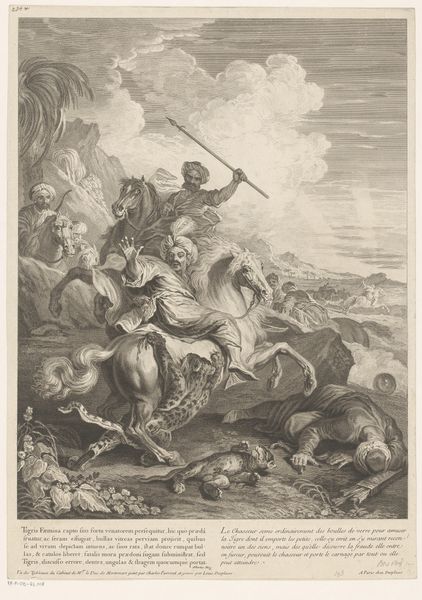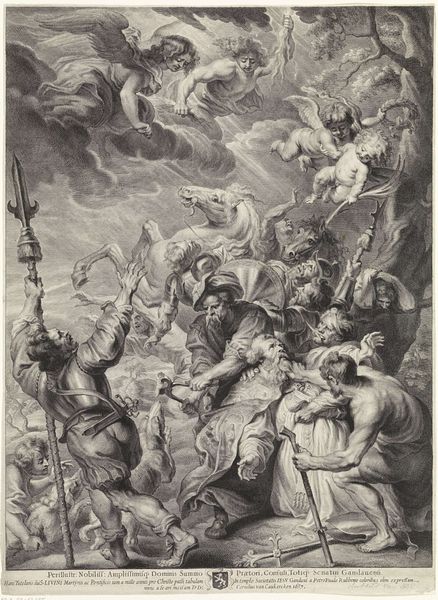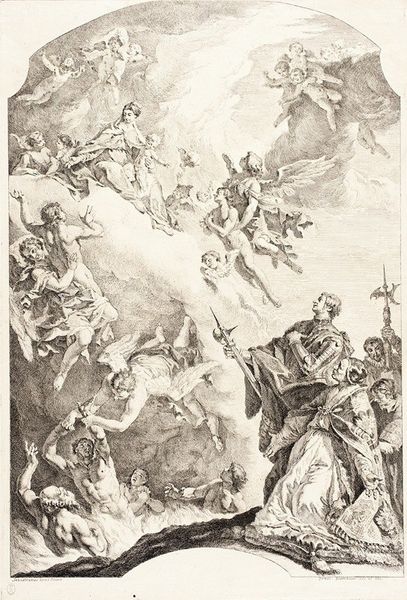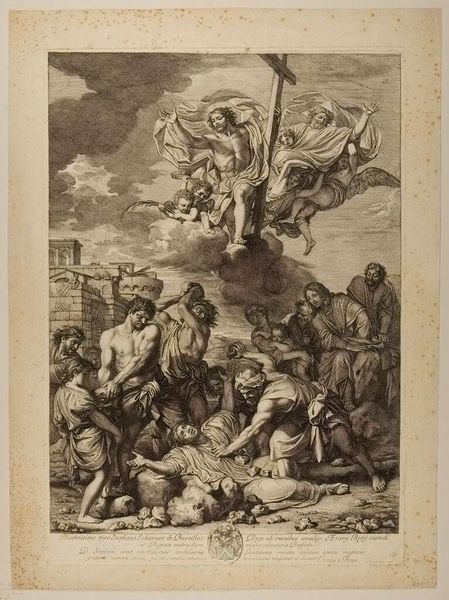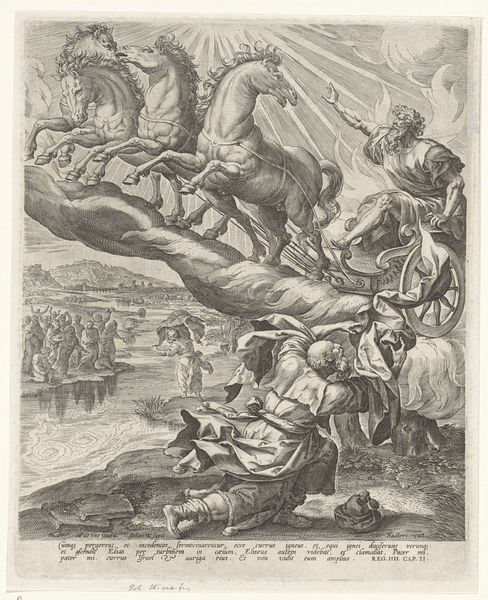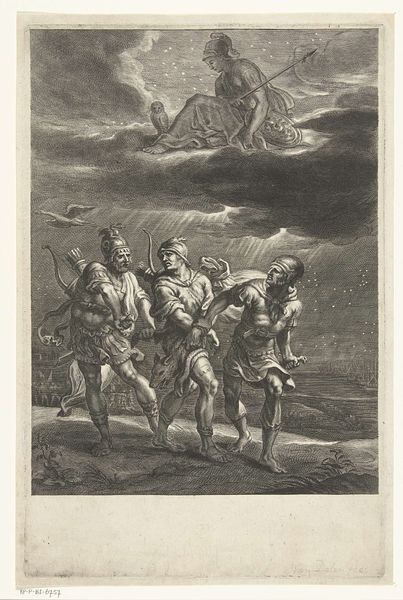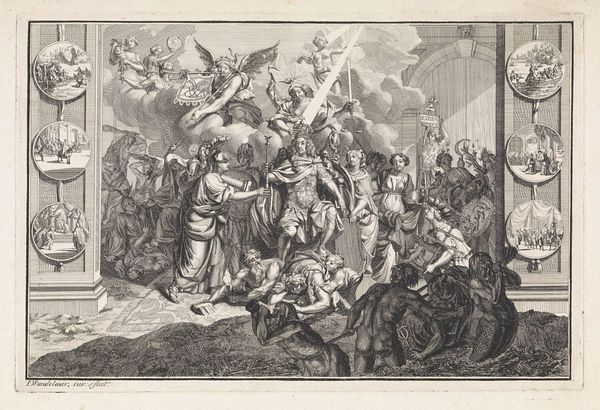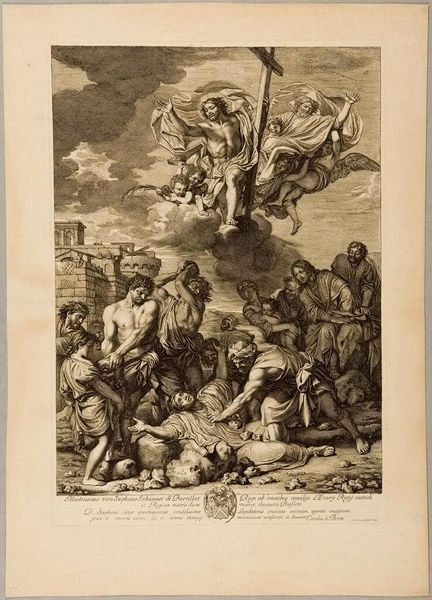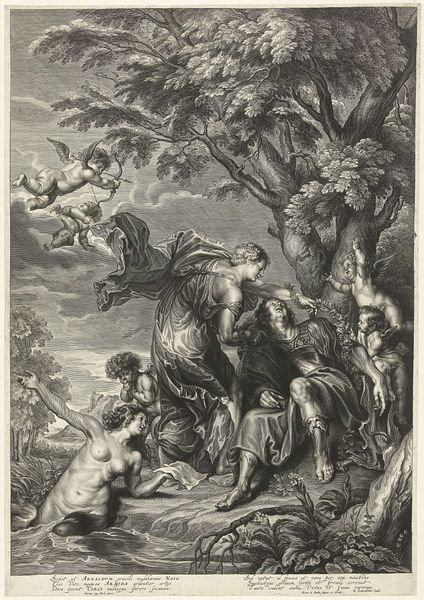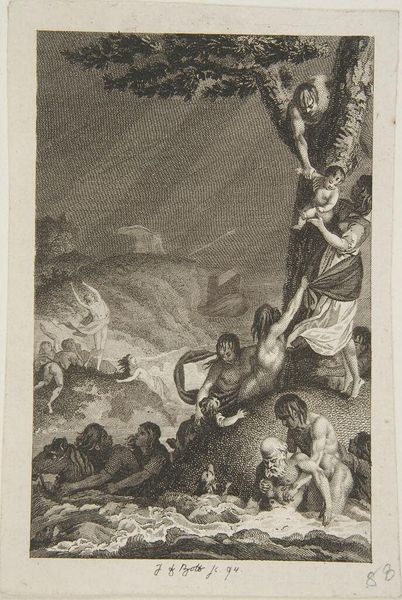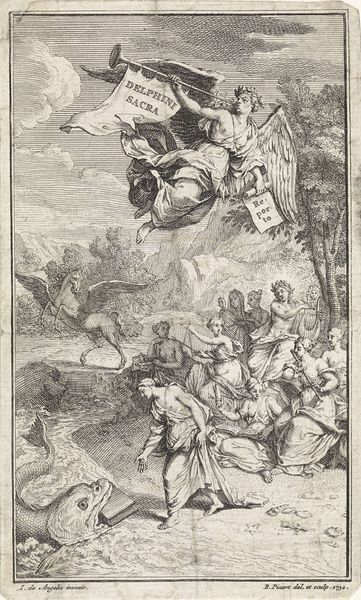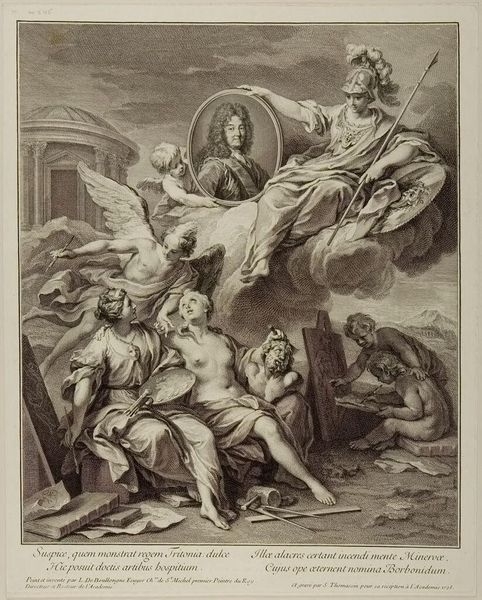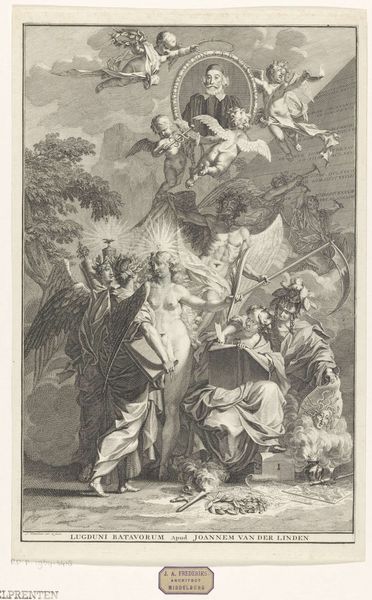
print, etching
#
narrative-art
#
baroque
# print
#
etching
#
classical-realism
#
figuration
#
history-painting
Dimensions: height 279 mm, width 225 mm
Copyright: Rijks Museum: Open Domain
Curator: This print, titled "The Conversion of Paul," was created by Cornelis Schut sometime between 1618 and 1655, here on display at the Rijksmuseum. What's your first reaction to this piece? Editor: The dynamism is immediate! The diagonal composition, the swirling figures… It practically leaps off the page, or would if it had color to fully animate its liveliness. Curator: Schut was working within the broader context of the Baroque period, an era known for its dramatic flair and emotional intensity, particularly within religious imagery. The narrative of Paul's conversion was incredibly important, showing how faith could dramatically change individuals, even leaders of religious persecution, a powerful sentiment during the Counter-Reformation. Editor: The angel's diagonal lines really energize that upper portion of the print. It contrasts wonderfully with the solidity of the figures on the ground; you can feel the celestial breaking through the earthly realm! Curator: This subject held immense socio-political weight during a period of intense religious conflict. Depictions such as this reinforced established religious doctrine while serving as a call for both conversion and religious tolerance. Editor: I think also you could use some semiotic interpretation. The fall of Paul suggests an erasure or subversion of his previous life. What falls away has, thus, liberated this raw space that then becomes defined by Paul's new spiritual awakening. Curator: Prints like this, by artists such as Schut, circulated widely and became vital tools for disseminating ideological narratives to broad audiences. This depiction emphasizes not only divine intervention but the potential for societal transformation through faith. Editor: The intricate line work creates a sort of delicate chaos, doesn't it? A fitting visual for a moment of profound upheaval and spiritual rebirth, very intense! Curator: Considering the socio-historical climate during which Schut produced "The Conversion of Paul" highlights the persuasive strength that art held as it navigated the changing religious landscape. Editor: Yes, examining the way Schut layers compositional energy to underscore narrative is essential to grasping the enduring legacy of this piece.
Comments
No comments
Be the first to comment and join the conversation on the ultimate creative platform.
